Contents
Preface
Chapter 1 Introduction
1.1 Enclosing a Solution
1.2 Bounding Roundoff Error
1.3 Number Pair Extensions
Chapter 2 The Interval Number System
2.1 Basic Terms and Concepts
2.2 Order Relations for Intervals
2.3 Operations of Interval Arithmetic
2.4 Interval Vectors and Matrices
2.5 Some Historical References
Chapter 3 First Applications of Interval Arithmetic
3.1 Examples
3.2 Outwardly Rounded Interval Arithmetic
3.3 INTLAB
3.4 Other Systems and Considerations
Chapter 4 Further Properties of Interval Arithmetic
4.1 Algebraic Properties
4.2 Symmetric Intervals
4.3 Inclusion Isotonicity of Interval Arithmetic
Chapter 5 Introduction to Interval Functions
5.1 Set Images and United Extension
5.2 Elementary Functions of Interval Arguments
5.3 Interval-Valued Extensions of Real Functions
5.4 The Fundamental Theorem and Its Applications
5.5 Remarks on Numerical Computation
Chapter 6 Sequences of Intervals and Interval Functions
6.1 A Metric for the Set of Intervals
6.2 Refinement
6.3 Finite Convergence and Stopping Criteria
6.4 More Efficient Refinements
6.5 Summary
Chapter 7 Interval Matrices
7.1 Definitions
7.2 Interval Matrices and Dependency
7.3 INTLAB Support for Matrix Operations
7.4 Systems of Linear Equations
7.5 Linear Systems with Inexact Data
7.6 More on Gaussian Elimination
7.7 Sparse Linear Systems Within INTLAB
7.8 Final Notes
Chapter 8 Interval Newton Methods
8.1 Newton’s Method in One Dimension
8.2 The Krawczyk Method
8.3 Safe Starting Intervals
8.4 Multivariate Interval Newton Methods
8.5 Concluding Remarks
Chapter 9 Integration of Interval Functions
9.1 Definition and Properties of the Integral
9.2 Integration of Polynomials
9.3 Polynomial Enclosure and Automatic Differentiation
9.4 Computing Enclosures for Integrals
9.5 Further Remarks on Interval Integration
9.6 Software and Further References
Chapter 10 Integral and Differential Equations
10.1 Integral Equations
10.2 ODEs and Initial Value Problems
10.3 ODEs and Boundary Value Problems
10.4 Partial Differential Equations
Chapter 11 Applications
11.1 Computer-Assisted Proofs
11.2 Global Optimization and Constraint Satisfaction
11.3 Structural Engineering Applications
11.4 Computer Graphics
11.5 Computation of Physical Constants
11.6 Other Applications
11.7 For Further Study
Appendix A Sets and Functions
Appendix B Formulary
Appendix C Hints for Selected Exercises
Appendix D Internet Resources
Appendix E INTLAB Commands and Functions
Index
References
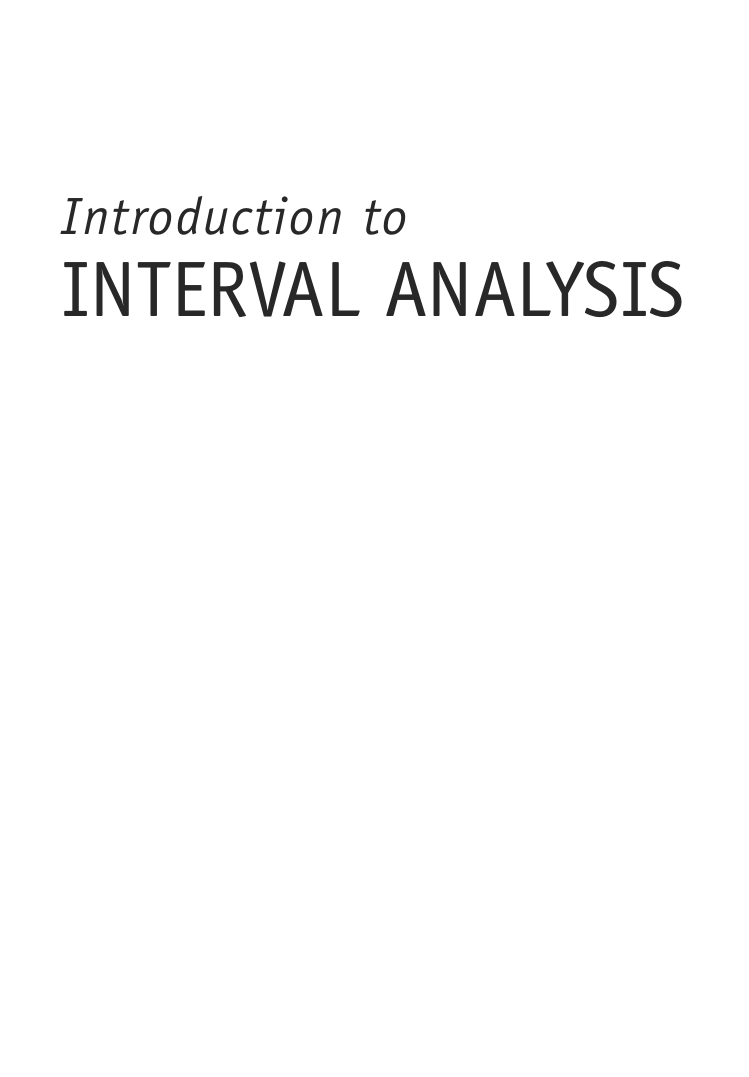

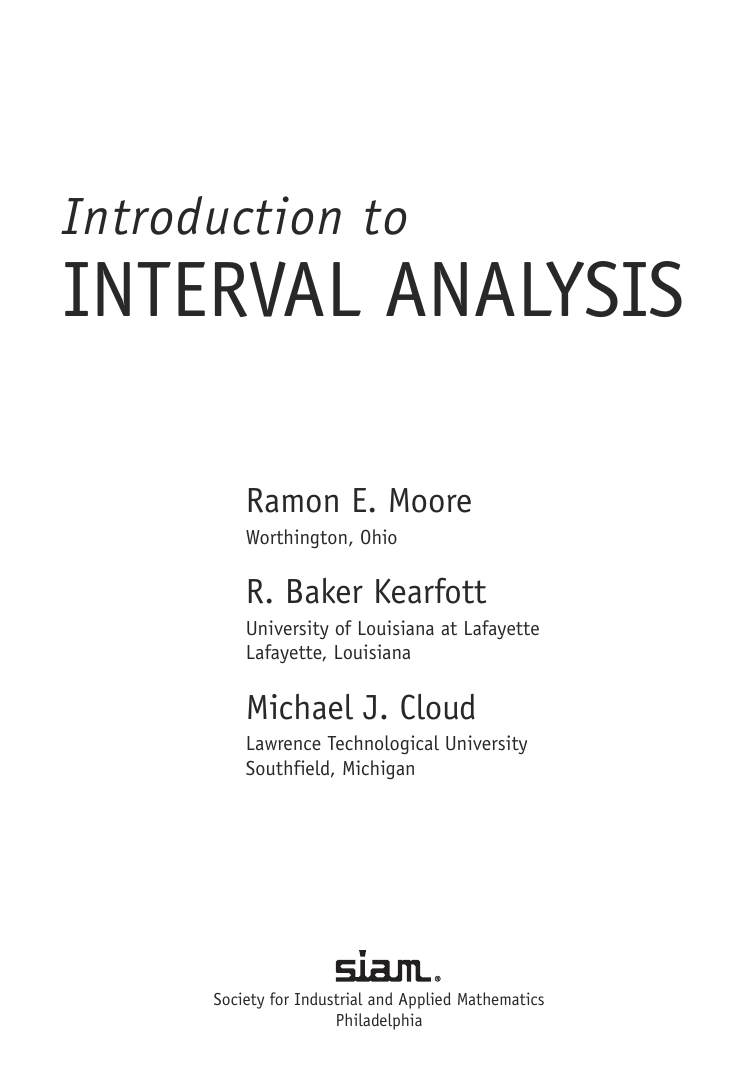
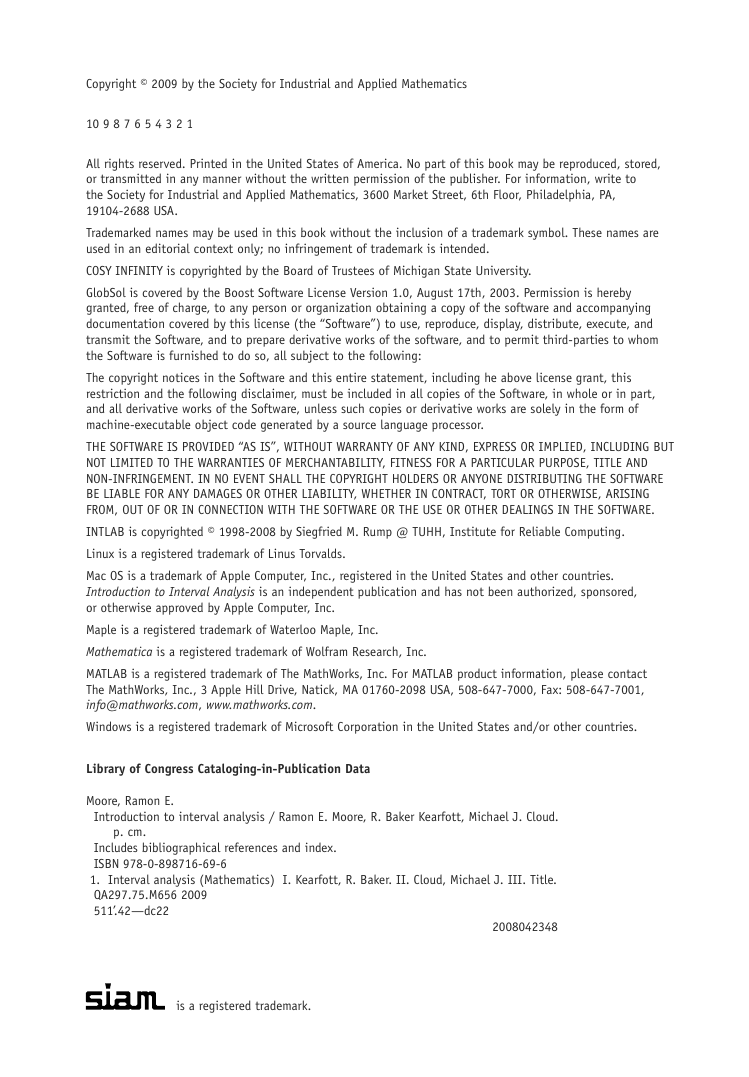
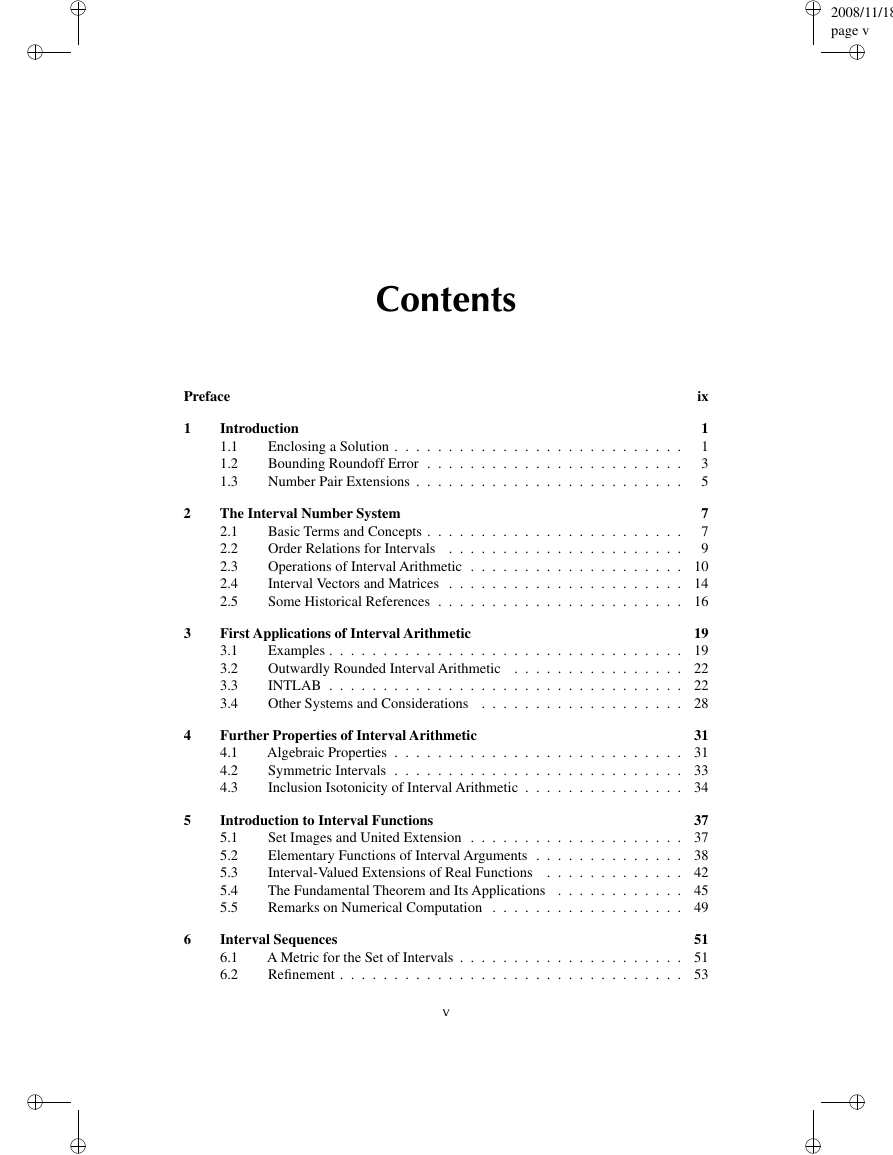
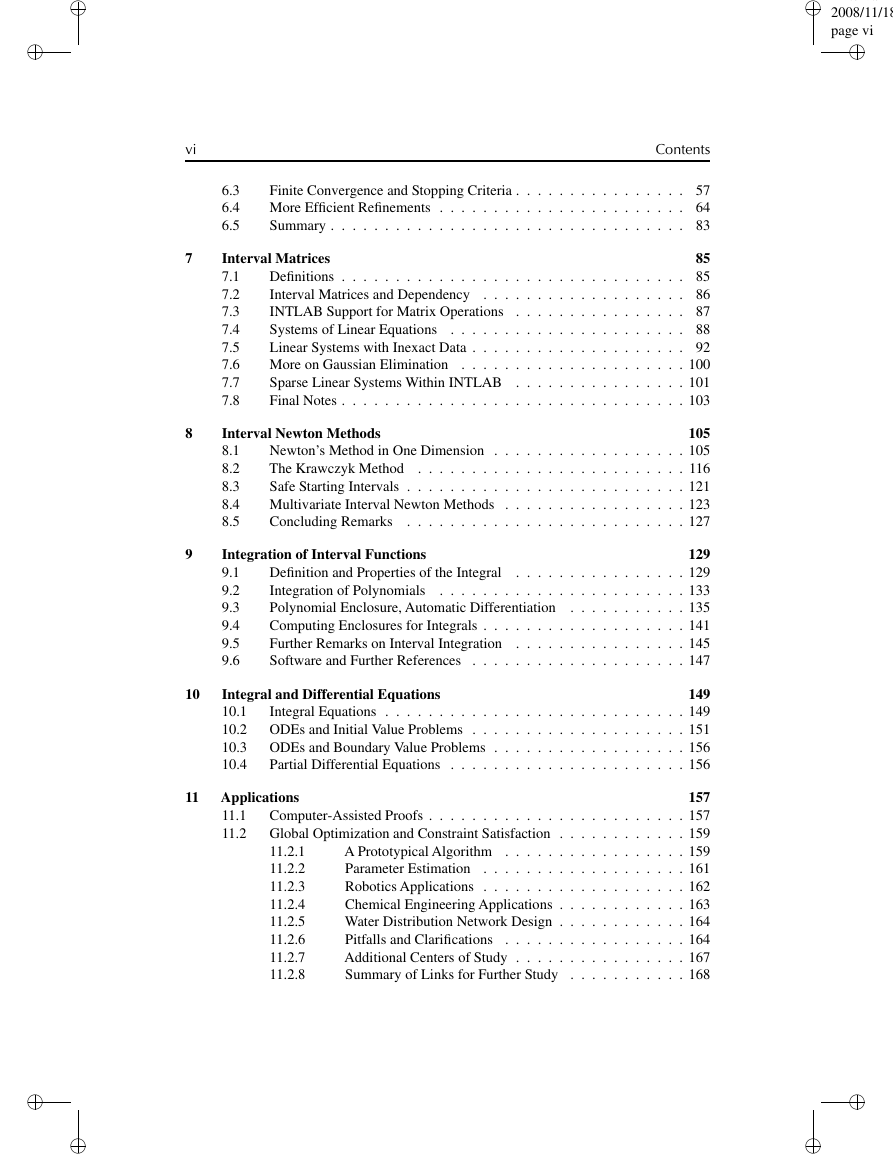
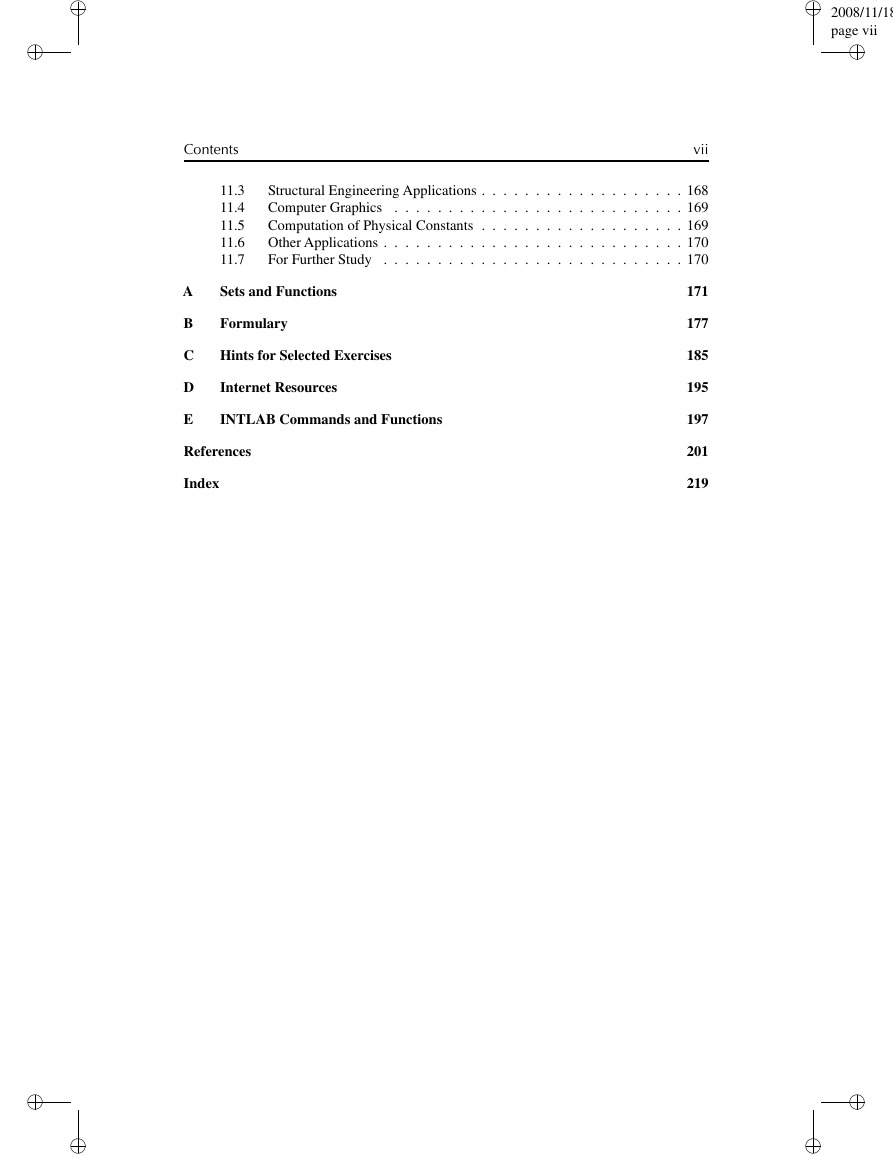
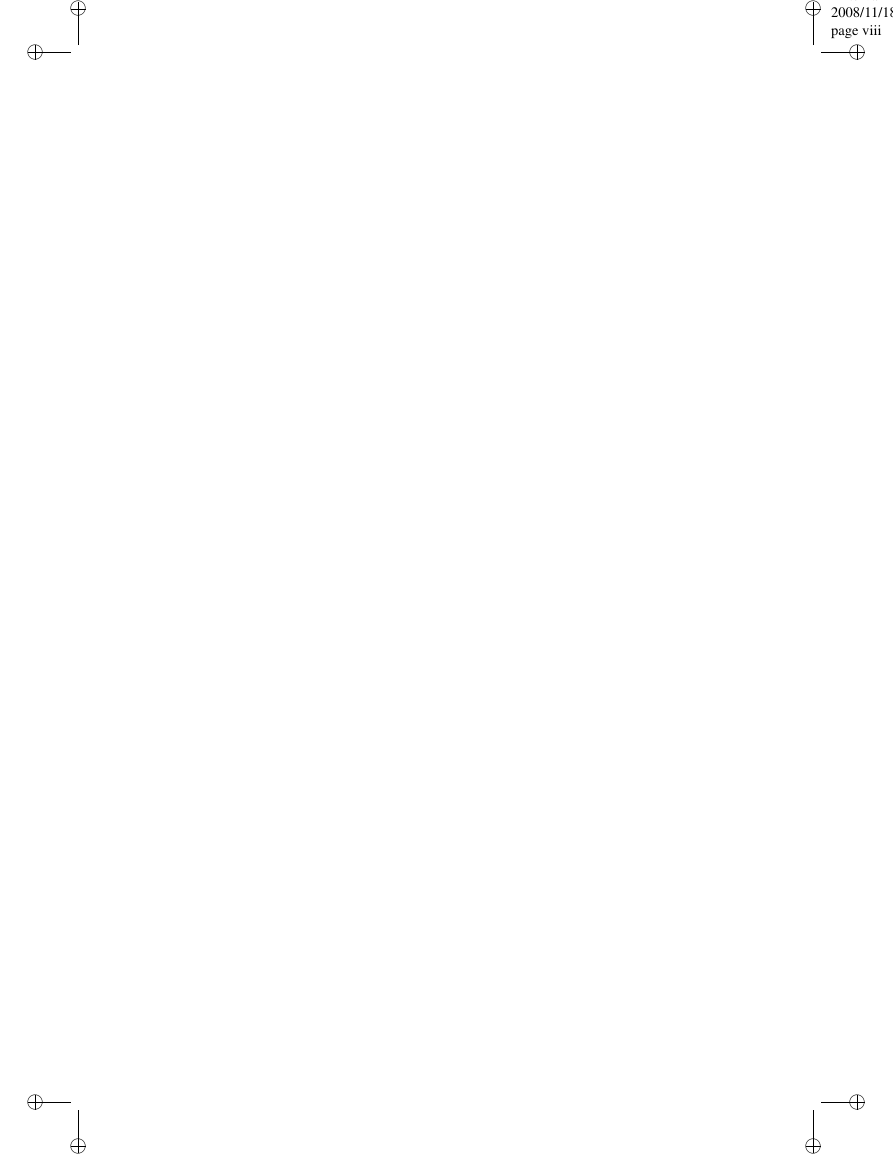








 2023年江西萍乡中考道德与法治真题及答案.doc
2023年江西萍乡中考道德与法治真题及答案.doc 2012年重庆南川中考生物真题及答案.doc
2012年重庆南川中考生物真题及答案.doc 2013年江西师范大学地理学综合及文艺理论基础考研真题.doc
2013年江西师范大学地理学综合及文艺理论基础考研真题.doc 2020年四川甘孜小升初语文真题及答案I卷.doc
2020年四川甘孜小升初语文真题及答案I卷.doc 2020年注册岩土工程师专业基础考试真题及答案.doc
2020年注册岩土工程师专业基础考试真题及答案.doc 2023-2024学年福建省厦门市九年级上学期数学月考试题及答案.doc
2023-2024学年福建省厦门市九年级上学期数学月考试题及答案.doc 2021-2022学年辽宁省沈阳市大东区九年级上学期语文期末试题及答案.doc
2021-2022学年辽宁省沈阳市大东区九年级上学期语文期末试题及答案.doc 2022-2023学年北京东城区初三第一学期物理期末试卷及答案.doc
2022-2023学年北京东城区初三第一学期物理期末试卷及答案.doc 2018上半年江西教师资格初中地理学科知识与教学能力真题及答案.doc
2018上半年江西教师资格初中地理学科知识与教学能力真题及答案.doc 2012年河北国家公务员申论考试真题及答案-省级.doc
2012年河北国家公务员申论考试真题及答案-省级.doc 2020-2021学年江苏省扬州市江都区邵樊片九年级上学期数学第一次质量检测试题及答案.doc
2020-2021学年江苏省扬州市江都区邵樊片九年级上学期数学第一次质量检测试题及答案.doc 2022下半年黑龙江教师资格证中学综合素质真题及答案.doc
2022下半年黑龙江教师资格证中学综合素质真题及答案.doc